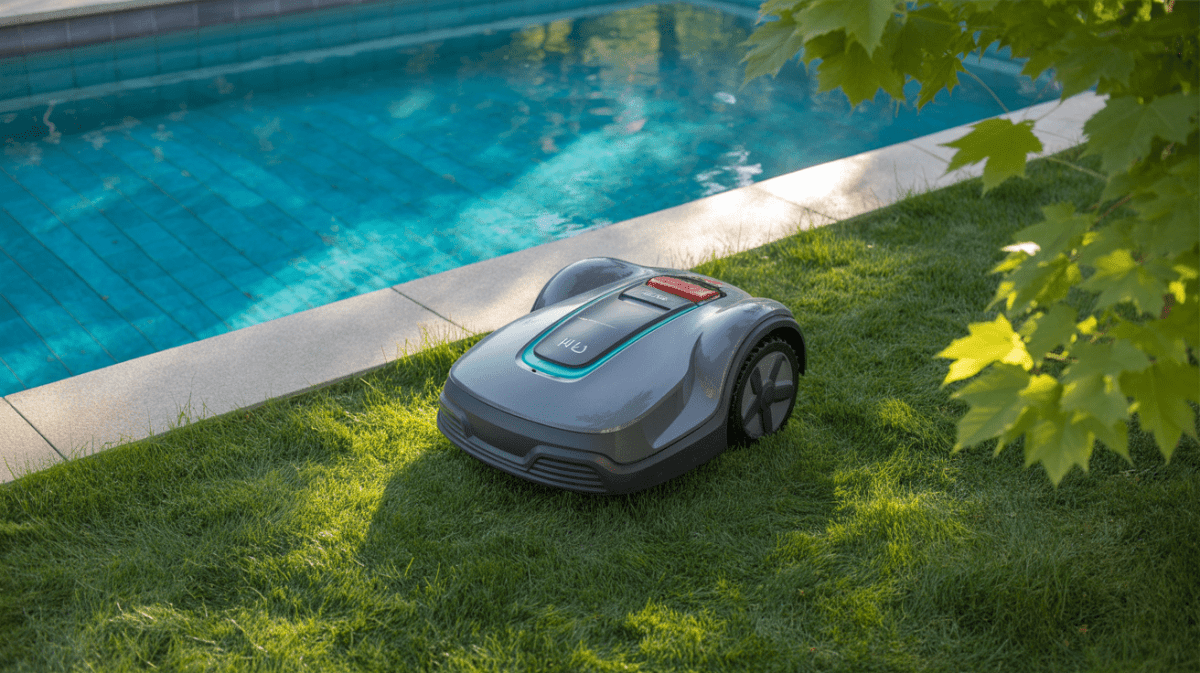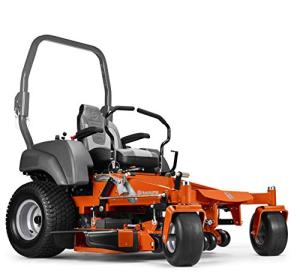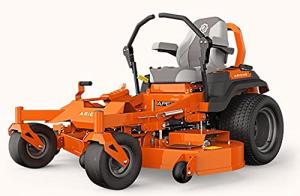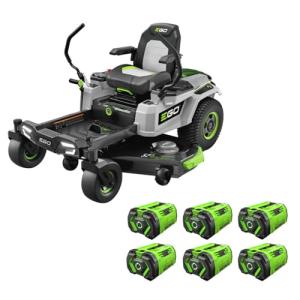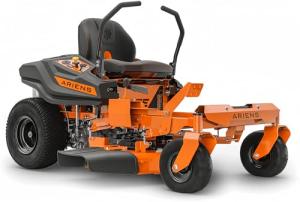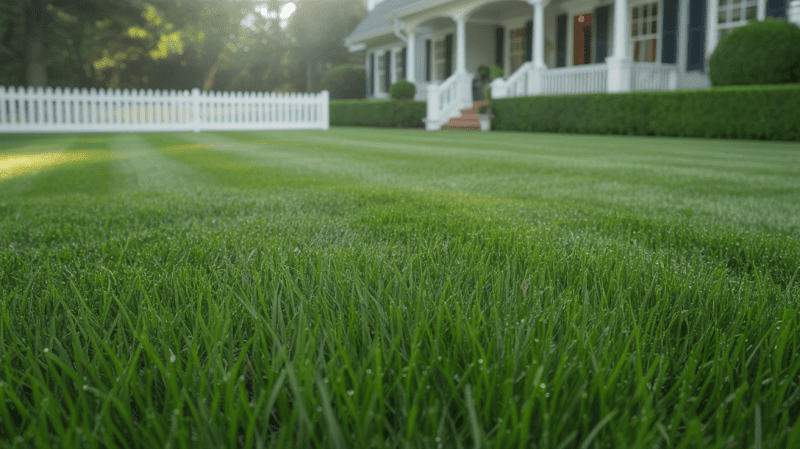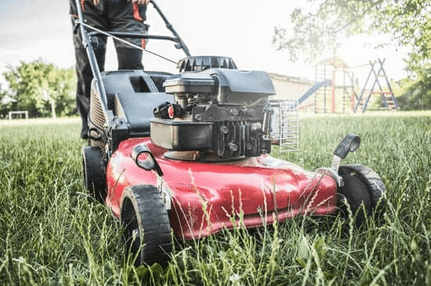Discover the best robotic lawn mowers to keep your yard looking great with minimal effort:
Robotic lawn mowers have revolutionized yard maintenance, offering a hands-free solution to keeping your lawn perfectly manicured. The 2025 models showcase remarkable technological advancements with improved navigation systems, longer battery life, and smarter features than ever before. Today's automated mowers can handle complex lawn layouts, steep slopes, and even communicate with your smart home devices. In this comprehensive guide, we'll examine the top 5 robotic lawn mowers of 2025, comparing their features, performance, and value to help you find the perfect automated solution for your lawn care needs.
Top 5 Robotic Lawn Mowers in 2025: Quick Comparison
Before diving into detailed reviews, let's compare the key specifications of our top 5 picks to help you quickly identify which robotic mower might best suit your needs.
| Model | Cutting Width | Battery Life | Smart Features | Weather Resistance | Price |
| Segway Navimow i Series | 7.5 inches | Up to 240 minutes | EFLS satellite navigation, AI camera, app control | IPX6 | $1,499 |
| Husqvarna Automower 115H | 8.7 inches | 60 minutes | Bluetooth connectivity, weather timer | IPX5 | $1,199 |
| Mammotion Luba 2 AWD 1000 | 15.7 inches | 120 minutes | RTK-GNSS, 3D Vision, obstacle detection | IPX6 | $2,299 |
| Segway Navimow X360 | 9 inches | 240 minutes | EFLS 3.0, VisionFence 2.0, multi-zone | IPX6 | $2,999 |
| Mammotion Luba 2 AWD 1000 | 15.7 inches | 120 minutes | Triple-redundant obstacle avoidance | IPX6 | $2,299 |
Editor's Choice: Segway Navimow X360

After extensive testing of the top robotic lawn mowers available in 2025, the Segway Navimow X360 stands out as our clear Editor's Choice. This premium model combines cutting-edge navigation technology, exceptional battery life, and superior cutting performance in a sleek, reliable package. What truly sets it apart is its advanced EFLS 3.0 navigation system that eliminates the need for boundary wires while providing centimeter-level precision, even in complex garden layouts.
2. Husqvarna Automower 115H Robotic Lawn Mower

Key Specifications
| 0.4 acre (up to 17,424 square feet) | 2 inches to 3.6 inches |
| 17 degrees | 60 minutes |
| 60 minutes | Boundary wire with Bluetooth control |
What We Like
- Height-of-cut range suits most types of grass
- Good performance on slopes up to 30 percent
- Intuitive programming via mobile app
- Program up to 3 different starting points
- Excellent value for the coverage area
What We Don't Like
- Only 60 minutes of runtime per charge
- Requires boundary wire installation
- Lacks GPS technology for advanced navigation
Performance Analysis
The Husqvarna Automower 115H represents exceptional value in the robotic mower market, offering reliable performance and durability at a more accessible price point. While it uses traditional boundary wire technology rather than GPS navigation, this tried-and-true approach ensures consistent results across a variety of lawn conditions.
With coverage for lawns up to 0.4 acres, the 115H is ideal for medium-sized suburban properties. Its 18-volt 2-amp-hour lithium-ion battery delivers 60 minutes of runtime per charge and recharges in just an hour, allowing for efficient mowing cycles throughout the day. The cutting height adjusts from 2 inches to 3.6 inches, making it suitable for both warm-season and cool-season grasses.
During our testing, the Automower 115H navigated slopes and obstacles with ease, reliably mowing on schedule and returning to its docking station without issues. The lawn's appearance remained consistent throughout testing, with no obviously missed spots. The Automower Connect app made it simple to program the schedule, set different starting points, and pause/restart mowing cycles as needed.

While it lacks some of the advanced features found in more expensive models, the 115H delivers where it matters most: reliable cutting performance and ease of use. The guide wire helps the mower navigate efficiently through narrow corridors between lawn areas, and the security features (PIN code and alarm system) provide peace of mind.
3. Mammotion Luba 2 AWD 1000 Robot Mower

Key Specifications
| 0.25 acres (up to 10,890 square feet) | 2.2 inches to 4.0 inches |
| 38 degrees (unprecedented in the industry) | 15.7 inches (dual cutting assemblies) |
| 3D vision and RTK fusion mapping | All-wheel drive (AWD) |
What We Like
- Perimeter wire-free navigation
- Navigates rough terrain and steep slopes up to 38 degrees
- Multizone management for up to 10 zones
- Mobile app controls mapping, scheduling, and cut height
- Twin-blade assemblies with 15.7-inch cutting width
What We Don't Like
- RTK reference point requires unobstructed sky view
- Premium price point
- Interface has learning curve for new users
Performance Analysis
The Mammotion Luba 2 AWD 1000 is a game-changer for homeowners with challenging terrain. Until now, yards with shallow tree roots, rocks, and steep slopes have made robotic mowing nearly impossible. Mammotion has addressed these concerns with an innovative weight-balanced design and all-wheel drive (AWD) system that allows the Luba 2 to conquer rough ground and steep slopes with up to 7.7 feet of elevation change per 10 linear feet.

The Luba 2 uses a 3D vision and RTK fusion mapping system to achieve precise navigation without the hassle of a perimeter wire. Setting up the equipment was straightforward, though we did encounter some initial glitches with the mapping process that were resolved after a firmware update. Once properly configured, mapping and scheduling worked flawlessly.
What truly sets the Luba 2 apart from other robotic mowers is its twin-blade assembly design, offering an impressive cutting width of 15.7 inches. The cutting width is wider than the wheels, allowing it to cut closer to edges than competing models. But the most significant advantage is the AWD system, which easily climbed the steepest slopes in our test yard and navigated bumpy corridors between separate mowing zones with ease.
"Mammotion's cut quality was really good, but its sure-footedness blew me away. Unlike others that were able to 'just make it' up the slopes in my yard, the Luba 2 traveled as well on the inclines as it did on the flats. No slippage and no lost mowing coverage."
5. Mammotion Luba Mini AWD Robot Lawn Mower

Key Specifications
| 0.38 acre (up to 16,553 square feet) | 2.2 inches to 4.0 inches |
| 38.6 degrees | Less than 60 dB |
| AI vision-enhanced mapping | All-wheel drive with omni wheels |
What We Like
- Reliable and intelligent navigation
- Robust build quality and six cutting blades
- Powerful app with a huge range of features
- Whisper-quiet at less than 60 dB
- Can handle up to 20 different lawn zones
- Manual mowing mode via smartphone control
What We Don't Like
- You need to be smartphone-savvy to get the most out of the mower
- Requires a GPS antenna with plenty of open sky
- The tiny safety key is easy to lose
Performance Analysis
For small yards with varying terrain, the Mammotion Luba Mini AWD offers the most effective, carefree robotic mowing experience we've encountered. This compact powerhouse blends rugged all-wheel drive capability with a powerful app and an impressive array of features, all in a sleek white design that resembles an off-road F1 car.
Setup is remarkably straightforward, with a detailed paper guide and in-app assistance. The mower communicates via WiFi, Bluetooth, and 4G connectivity, offering multiple ways to stay connected. Defining your lawn boundaries is as simple as driving the mower around with your phone like a remote-control car, demonstrating no-go areas and channels between up to 20 different lawn zones.

The most impressive aspect of this mower is its go-anywhere capability. With four powered wheels rather than the standard two found on most robot mowers, it can climb steep slopes of up to 38.6° and turn on its own axis thanks to clever front "omni" wheels. This makes it an ideal choice for properties with uneven terrain or multiple small lawn areas separated by pathways.
The cutting height can be adjusted on the fly from 20mm to 65mm, accommodating different grass types and conditions. One particularly innovative feature is the "manual mowing mode," which allows you to drive the mower with your phone when within Bluetooth range to tackle any awkward tufts of grass or missed spots – a feature surprisingly absent from many competing models.
During our testing, the Luba Mini AWD consistently delivered excellent results, cutting in neat, straight lines and performing thorough perimeter cuts. It even makes neat three-point turns at the end of each pass to protect the grass. The mower can tackle up to 800 m² of lawn area and mow up to 250 m² per charge, making it ideal for small to medium-sized properties with complex layouts.
Robotic Lawn Mower Buying Guide: What to Consider
Investing in a robotic lawn mower is a significant decision that can transform your lawn care routine. Before making your purchase, consider these key factors to ensure you select the right model for your specific needs:
Yard Size and Complexity
The first step in choosing a robotic mower is accurately measuring your lawn area. Manufacturers specify maximum coverage areas, but these are calculated under ideal conditions. Complex layouts with multiple zones, narrow passages, or obstacles may reduce effective coverage. For optimal performance:
- Small lawns (up to 0.25 acres): Consider compact models like the Mammotion Luba Mini AWD
- Medium lawns (0.25-0.5 acres): Mid-range models like the Husqvarna Automower 115H
- Large lawns (0.5+ acres): High-capacity models like the Segway Navimow X360
Terrain and Slope Handling
Your yard's topography significantly impacts which robotic mower will perform best. Slope ratings are typically expressed in degrees or percentages (100% = 45 degrees):
- Flat yards with minimal slopes: Most basic models (15-20 degree capability)
- Moderate slopes: Mid-range models with improved traction (20-30 degree capability)
- Steep slopes: All-wheel drive models like the Mammotion Luba 2 AWD (up to 38 degrees)
Navigation Technology
Robotic mowers use different navigation systems, each with advantages and limitations:
- Boundary Wire: Traditional method requiring physical wire installation around the perimeter
- GPS/RTK: Wire-free navigation using satellite positioning (requires good sky visibility)
- Vision/AI: Camera-based systems that recognize lawn boundaries and obstacles
- Hybrid Systems: Combine multiple technologies for improved reliability
Battery Life and Charging
Battery performance determines how much area a mower can cover before needing to recharge:
- Runtime: Ranges from 60 minutes (basic models) to 240+ minutes (premium models)
- Charging time: Typically 60-90 minutes for a full charge
- Battery type: Most use lithium-ion batteries with 2-3 year lifespan
Cutting Performance
Consider these cutting-related specifications:
- Cutting width: Wider cutting paths (9-15 inches) increase efficiency
- Cutting height range: Ensure compatibility with your grass type (cool-season: 2.5-4 inches; warm-season: 1-3 inches)
- Cutting pattern: Random patterns vs. systematic line patterns
- Edge cutting capability: Some models cut closer to boundaries than others
Smart Features and Connectivity
Modern robotic mowers offer various smart features:
- Mobile app control: Remote scheduling, monitoring, and adjustments
- Smart home integration: Compatibility with Alexa, Google Home, etc.
- Weather adaptation: Adjusting schedules based on weather forecasts
- Security features: PIN codes, alarms, GPS tracking
Pro Tip: When comparing robotic mower prices, factor in installation costs. Traditional boundary wire systems may require professional installation (adding $300-500), while GPS/vision systems typically have simpler setup but higher upfront costs.
Frequently Asked Questions About Robotic Lawn Mowers
How often should I use a robotic lawn mower?
Robotic mowers are designed to cut frequently, typically every 2-3 days during peak growing season. This "little and often" approach maintains an ideal grass height while returning tiny clippings to the lawn as natural fertilizer. During rapid growth periods (spring), daily mowing may be beneficial, while once or twice weekly is sufficient during slower growth periods. Most modern mowers allow you to set automated schedules or use weather-adaptive programming to optimize cutting frequency based on growth rates.
Can robotic lawn mowers handle wet grass?
While most robotic mowers are weatherproof (typically IPX5 or IPX6 rated), cutting wet grass isn't ideal. Many models include rain sensors that automatically return them to their charging stations during rainfall. Cutting wet grass can result in uneven cuts, clumping of clippings, and potential spread of lawn diseases. Additionally, wet slopes can reduce traction, causing mowers to slip or get stuck. For best results, program your mower to resume operation a few hours after rainfall when the grass has dried.
How long do robotic lawn mowers last?
With proper maintenance, a quality robotic lawn mower should last 8-10 years. However, certain components require periodic replacement:
- Blades: Replace every 1-2 months of regular use (or after 100-200 hours of operation)
- Batteries: Typically last 2-3 years before capacity noticeably decreases
- Wheels: May need replacement after 3-5 years depending on terrain
Most manufacturers offer 2-3 year warranties, with premium models sometimes offering extended coverage. Regular cleaning and winter storage in a dry, frost-free location will significantly extend your mower's lifespan.
Are robotic lawn mowers safe around children and pets?
Modern robotic mowers incorporate multiple safety features:
- Lift sensors that immediately stop the blades if the mower is picked up
- Obstacle detection systems that cause the mower to stop, reverse, and change direction
- Blade positioning well under the mower's body, away from edges
- Low-power blades that stop instantly when obstructed
While these features make robotic mowers generally safe, manufacturers still recommend supervising young children and pets during operation as a precaution. Some models like the Mammotion Luba series offer advanced AI detection specifically designed to recognize and avoid pets.
Do robotic mowers work with smart home systems?
Yes, most premium robotic mowers offer integration with smart home ecosystems. Common integrations include:
- Voice assistants: Amazon Alexa, Google Assistant, and Apple HomeKit compatibility
- IFTTT: Create custom automation rules (e.g., "Don't mow when sprinklers are active")
- Smart home platforms: Integration with systems like Samsung SmartThings
These integrations allow for voice commands, automated scheduling based on other smart home events, and incorporation into broader home automation routines. The Segway Navimow X360 and Husqvarna Automower series offer particularly robust smart home integration capabilities.
Final Verdict: Which Robotic Lawn Mower Is Right For You?
After extensive testing of the top robotic lawn mowers available in 2025, we've found that the best model for you depends primarily on your specific lawn conditions and requirements. Here's our targeted recommendation guide:
Best Overall
- Segway Navimow X360
- Perfect balance of features and performance
- Exceptional coverage area (up to 2.5 acres)
- Advanced EFLS 3.0 navigation system
- 240-minute runtime per charge
- Ideal for: Large properties seeking a riding mower replacement
Best Value
- Husqvarna Automower 115H
- Excellent performance-to-price ratio
- Reliable boundary wire navigation
- Coverage up to 0.4 acres
- Proven durability and support network
- Ideal for: Budget-conscious homeowners with medium-sized lawns
Best for Challenging Terrain
- Mammotion Luba 2 AWD 1000
- Unmatched slope handling (up to 38 degrees)
- All-wheel drive system for difficult terrain
- Wide 15.7-inch cutting width
- Wire-free RTK navigation
- Ideal for: Properties with steep slopes and rough terrain
For smaller yards or those with complex layouts, the Mammotion Luba Mini AWD offers exceptional maneuverability and the same terrain-conquering capabilities as its larger sibling in a more compact package. Meanwhile, the Segway Navimow i Series provides an excellent entry point into wire-free mowing technology with its precise EFLS navigation and attractive lawn striping capability.
Regardless of which model you choose, today's robotic lawn mowers offer unprecedented convenience and cutting quality. The technology has matured significantly in recent years, with wire-free navigation, improved obstacle detection, and smarter features becoming standard. By matching your specific lawn requirements with the right robotic mower, you can enjoy a perfectly maintained lawn with minimal effort – freeing up your weekends for more enjoyable activities.
